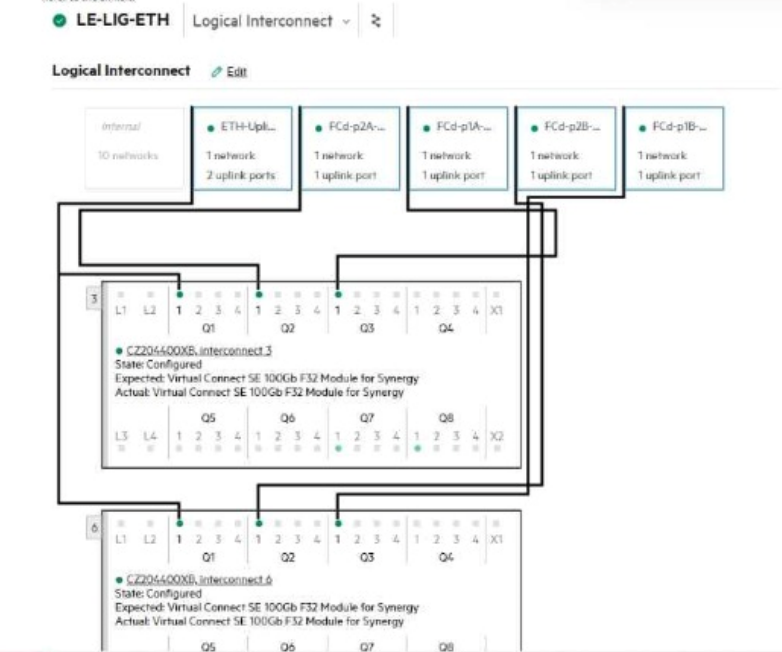HPE0-S59 HPE Compute Solutions Exam Practice Test
Your customer with an HPE Synergy environment needs to prevent a timeout and loss of communication during an external switch firmware upgrade.
Which parameter can the customer configure within an uplink set to meet their requirements?
Answer : D
Refer to Exhibit:

Your customer plans to update the firmware for the logical interconnect shown.
Based on the information in the exhibit, which statement about network connectivity is true?
Answer : B
Your customer changed the storage pool state from managed to discovered.
What is the impact of that change?
Answer : C
A junior architect designed a solution based on HPE Synergy that must meet the following requirements:
Support at least 30 HPE Synergy 480 Gen10 Plus compute modules
Interconnect modules must provide MAC and WWN virtualization
All HPE Synergy frames must formulate a single management entity
The management appliance should not be a single point of failure
Connectivity to FC array should be available to all compute nodes
The proposal consists of:
3 HPE Synergy 12000 frames
6 HPE Composer 2 modules
2 HPE Virtual Connect SE 100Gb F32 Module
4 HPE Synergy 50Gb Interconnect Link Module
Which statements about this proposed design are true? (Select two)
Answer : C, D
Which statement about port flap protection is true?
Answer : A
Which tool can be used to evaluate me health of an HPE Oneview appliance before proceeding with an appliance updated.
Answer : B
The HPE OneView Update Readiness Checker is a tool specifically designed to evaluate the health and readiness of an HPE OneView appliance before proceeding with an update. It checks for any potential issues that could affect the update process and provides recommendations for resolution.
What is a limitation when creating a server profile?
Answer : A
A limitation when creating a server profile in HPE OneView is that it is not possible to create shared volumes on demand directly through a server profile. Server profiles in HPE OneView are used to define and manage the configuration of compute nodes, including network connections, BIOS settings, and boot order, but they do not have the capability to dynamically create or manage shared storage volumes.